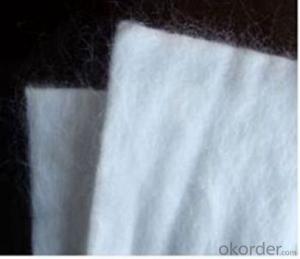Geotextile blankets are an advanced and adaptable material that is used in a wide range of construction and environmental applications. These textiles are made from high strength polyester or polypropylene fibres, which provide stability, filtration, and protection to the underlying soil or other materials. The use of geotextile blankets has revolutionized how we approach civil engineering as well as environmental conservations.
Construction Aptitude
Geotextile blankets have several angles which make them indispensable in the building industry. They can be used to reinforce soil against erosion; establish stable foundations for roads and other infrastructure; this is why they are commonly resorted to by engineers and contractors. The durability and pliability of the fabric enables it to adapt itself to various terrains ensuring that its support systems are dependable over a long period.
One of the greatest merits about geotextile blankets is that they help soil reinforcement. Through the inclusion of these fees into building projects, engineers make it possible to have stronger, more long-lasting foundations for erected structures. This becomes especially critical in such areas prone to natural calamities like earthquakes or landslides because strength must be vital for survival.
Environmental Conservation
Besides their significance in construction work geotextile blankets also play major roles in protecting the environment through remediation activities. Generally applied in slope protection cases where retaining of soil prevents erosion leading proper drainage thus save water sources from pollution through siltation. Geotextiles act here as filters allowing water to pass through but retaining fine particles.
Furthermore, landfill caps also use geotextile blankets whose aim is preventing hazardous seepage into adjacent environments. By erecting a barrier between a landfill zone and land below, these covers inhibit poisons from leaching out thereby saving wildlife habitat.
Installation And Maintenance
The process of installing geotextiles is quite simple provided there is some specialized equipment at hand when doing this job. It is easy for contractors to put these materials on top of where they want them, ensuring that there is adequate overlap and anchorage to prevent any displacement. Once placed the geotextile blankets are very strong and do not need any maintenance at all thus enabling saving costs in a project.
Geotextiles require simple maintenance procedures. Regular checks should be carried out in order to see if they have worn out or been damaged whereby repairs may be quickly fixed. The project managers greatly welcome this aspect because it allows them enough time to perform various duties.
Personal Touch: A Contractor’s Perspective
Being someone who has interacted with geotextile blankets in many projects, I can say that these materials work effectively without posing much challenge. It’s always thrilling seeing a project come together with such a reliable material. The manner in which they adapt themselves to the land creating an almost invisible yet sturdy support system is simply outstanding.
I recall one particular instance when we used geotextile blankets to reinforce a steep slope. This area had landslides as one of its features, but traditional methods of reinforcement were simply impractical due to their cost implications as well as time factor required for execution. We managed to create a stable and secure environment using geotextile blankets which today still exists intact.
Future Geotextile Blankets
Geotextile blankets are projected to have a bright future as new technologies and materials emerge. These blankets are getting even stronger and more durable due to advances in manufacturing, while investigations into novel uses expand their potential applications. Geotextile blankets are proving useful for everything from large-scale civil engineering projects to small-scale environmental ones.
The demand for materials such as geotextile blankets is expected to increase if the world becomes more aware of sustainable construction and environmental conservation. The ability to adapt, durability, and minimal ecological footprint make them perfect for projects that strive for optimum performance combined with eco-friendliness.
In summary, geotextile blankets testify human brilliance of finding ways that benefit both our infrastructure and environment. As we keep on coming up with newer ideas in the ever expanding business environment, these blankets will most probably be essential in shaping the future of building industry and environmental protection at large.

